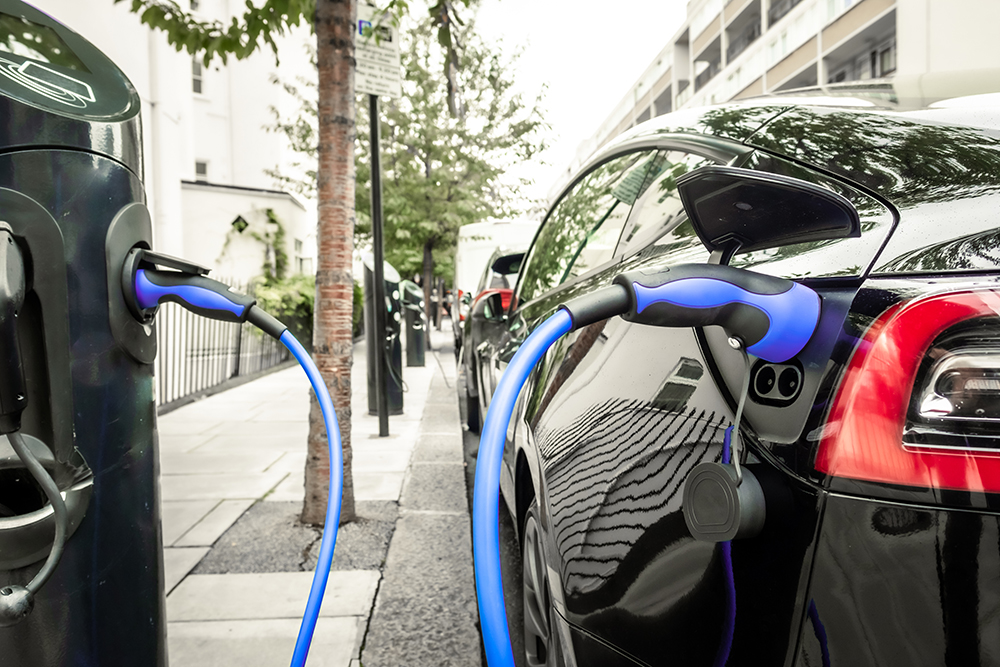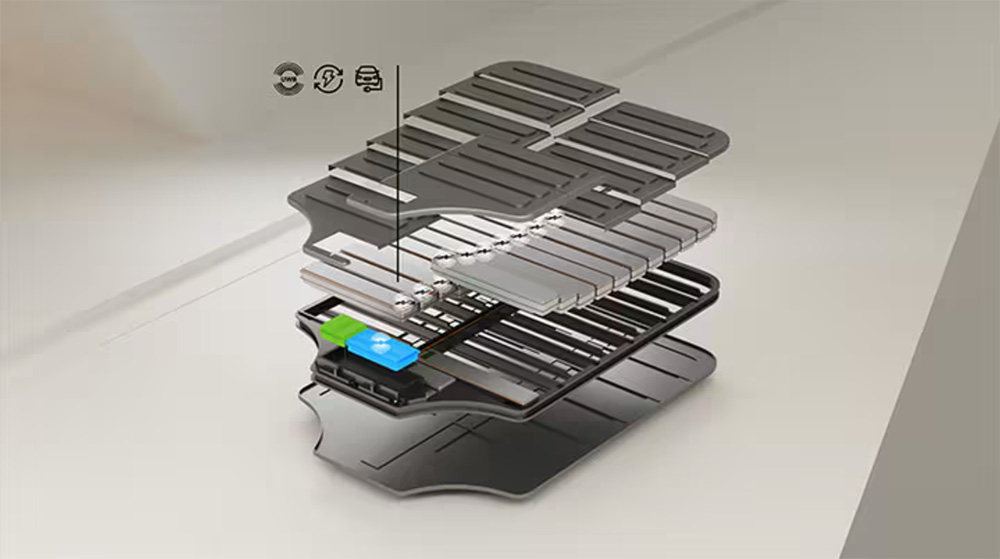15 November 2024

The European electric vehicle (EV) market bounced back in September, with record performances in the best-sellers table. José Pontes, data director at EV Volumes, analyses the result with Autovista24 journalist Tom Hooker.
A total of 295,724 EVs took to European roads in September, an increase of 6% year on year. It is the market’s first growth in five months and outperformed overall new-car registrations, which dropped by 4%.
Battery-electric vehicles (BEVs) drove this improvement. The technology saw deliveries rise by 14% compared to 12 months ago, with 212,640 units. Conversely, plug-in hybrids (PHEVs) fell 9% in September, with 83,084 registrations.
EVs took a 26% market share in September, with BEVs alone making up 19% of total registrations. All-electric vehicles captured 72% of plug-in deliveries in the month.
Only electrified powertrains increased volumes in the month, with hybrids (HEVs), including full and mild hybrids, up 12%. Meanwhile, petrol suffered a 19% decline and diesel dropped 24%. This meant HEVs overtook petrol registrations for the first time, a trend that is likely to continue.
In the first nine months of the year, 2.13 million plug-in vehicles have been delivered to customers. This was down 3% compared to the same period in 2023.
EVs recorded a 22% share from January to September, while BEVs made up 15% of the total new-car market. The all-electric technology posted a 67% share of plug-in deliveries during this period, the same result as one year ago.
Tesla triples deliveries
Once again, the Tesla Model Y was the best-selling EV in Europe. It posted 28,995 deliveries in September, almost doubling the volume of its nearest competitor. However, the crossover has hit the market’s natural limits. It is also being affected by its sibling, the refreshed Model 3, as it increases in popularity.
Europe’s leading BEV saw the highest demand in the UK with 5,780 units. Elsewhere, France (4,591 units), Sweden (4,125 units), Germany (3,067 units), the Netherlands (2,600 units), Norway (2,105 units) and Belgium (1,283 units) contributed to registrations.
In second position came the aforementioned Tesla Model 3, with 14,967 deliveries. This was three times the result it recorded 12 months ago. It is expected to continue in the runner-up spot alongside its stablemate.
The sedan’s most popular markets differed slightly from the Model Y. Its best performance was in Spain (2,221 units) followed by Norway (2,067 units), the UK (2,067 units), Italy (1,284 units) and the Netherlands (1,258).
Skoda’s sparkling EV
Rounding out the top three was the Skoda Enyaq. The crossover achieved a record 10,085 registrations in September, the first time it has posted a five-digit monthly result. Demand is at an all-time high for the Enyaq thanks to a recent refresh. A top-five finish in 2024 is possible, but this depends on how its sibling, the Elroq, will affect it.
Volumes were high for the Enyaq in Germany (3,406 units). Meanwhile, the UK (1,520 units) and Norway (776 units) saw strong demand.
The Volvo EX30 finished fourth, with 7,395 deliveries. It appears that the EU’s tariffs on BEVs built in China have impacted the crossover’s performance. Before the start of the import charges, the EX30 achieved three consecutive months of above 8,000 deliveries. However, since the countervailing duties were imposed, the EV has not managed to reach this figure.
The model was a popular choice in the UK, with 1,620 registrations. The market has not introduced the tariffs, which are solely imposed by EU member states. Its good performance in this country, therefore, backs up the impact of the duties elsewhere. The Netherlands (904 units) and Norway (803) also helped to boost volumes.
VW still recovering
In fifth came the Volkswagen (VW) ID.4, posting 7,090 deliveries. The compact crossover is recovering from a poor first half of the year, after a recent refresh that improved its specifications. Its largest registration total was in the UK (1,920 units), followed by Germany (1,371 units) and Belgium (666 units).
This means the UK was the highest volume market for three of the top five best sellers. The region recorded the most EV deliveries in Europe during September.
Germany’s EV market is still recovering from the end of incentives, while France is waiting for the ramp-up of its new domestic EVs. Belgium also appeared among the best-selling European countries, due to its strong BEV company car incentives.
Landing in seventh was the Ford Kuga PHEV. It was September’s best-selling plug-in hybrid, reaching 5,579 registrations.
Below, the ID.7 enjoyed its third record month in a row, with 5,462 deliveries. This allowed it to join the EV top 10 for the first time, finishing in eighth. Volumes are expected to grow significantly in Scandinavia, due to the addition of AWD as standard in these versions.
More record performances
Another record performance came from the Mercedes-Benz EQA. It finished 11th, posting 5,004 registrations. Meanwhile, the Volvo XC60 PHEV placed 12th with 4,644 deliveries. This was the SUV’s best result in 18 months and made it September’s second-best-selling plug-in hybrid.
The Cupra Born enjoyed a year-best performance in 13th. It was the sixth representative of the VW brand in the top 20, reaching 4,511 registrations. The MG4 came 14th, with 4,149 deliveries. This was its first appearance in the table since the start of the new tariffs.
Meanwhile, the BMW X1 PHEV managed a record month in 15th. With 4,074 deliveries, it was the third most popular plug-in hybrid during September.
In its first month on the market, the Citroën e-C3 took 17th, posting 3,634 registrations. This is one of the best landings ever for a BEV in Europe, with only France receiving the hatchback in significant numbers. If production ramp-up goes well, it could start 2025 strongly.
The Ford Explorer placed 18th, with 3,525 registrations in only its second month on the market. With a good design, the model could secure a top 10 position in 2025.
Fresh-faced EVs
Outside the top 20, there were further fresh-faced models. The Renault Scenic E-Tech enjoyed a record performance with 3,225 deliveries. The Peugeot e-3008 also had a best-ever result, reaching 3,156 registrations. Both are continuing to build volumes and are strong candidates for a top 20 position.
Meanwhile, the VW Tiguan PHEV landed well, with 3,108 deliveries. The latest generation offers a new plug-in hybrid powertrain. This includes a 20kWh battery, over 100km of electric-only range and fast-charging. With these specifications, the crossover is a strong contender for the 2025 PHEV title.
The Mini Countryman Electric also saw record volumes (2,964 units). It is the carmaker’s current best-seller, with the Mini Cooper Electric suffering from tariffs. The Toyota C-HR PHEV was also ramping up, with its best-ever result of 2,854 registrations. The SUV could join the top 20 in the future.
Highly anticipated plug-ins
Another model landing in September was the Porsche Macan (1,777 units). It beat its cousin, the Audi Q6 e-Tron, which began deliveries a couple of months beforehand. The EV could achieve around 50,000 units next year.
The Polestar 4 arrived on the market in the month too with 1,645 deliveries. Elsewhere, the Audi Q6 e-Tron continued building up volumes, reaching 1,452 registrations in September.
The new Renault 5 managed 1,138 deliveries in its launch month. The highly anticipated model features a retro design as the manufacturer’s representative in the B-segment. With production increasing at the start of 2025, it could reach 100,000 units next year.
Tesla’s EV dominance
Tesla’s Model Y remained Europe’s most popular EV in the year to date. With 155,219 registrations, it accounted for 7.3% of all plug-in deliveries from January to September. The crossover has an over 69,000-unit gap to its closest competitor and is set to win its third best-seller title in a row.
Its sibling, the Model 3, has also likely secured second place, reaching 85,953 registrations. It has an almost 25,000-unit advantage over third. This means Tesla should have a repeat of its 2022 and 2023 performance with both cars.
The picture is less clear for the next position, with the Volvo EX30 currently holding third (61,210 units). The SUV should hold onto its place, with just under 10,000 deliveries between itself and the Audi Q4 e-Tron in fourth (51,400 units) at the end of September. Meanwhile, the Skoda Enyaq is more than 11,000 units behind in fifth (50,198 units).
The first position change came in sixth, as the VW ID.4 (45,282 units) climbed another spot. However, a third-place finish, which it achieved in 2022 and 2023, seems out of reach. This change was at the cost of the MG4 (42,890 units) which is still feeling the weight of the EU’s Chinese-built BEV tariffs.
Another VW was making moves in the table, namely the ID.3 (41,233 units), which surpassed the Volvo XC60 PHEV (40,894 units) for eighth.
Elsewhere, the Kia Niro EV (30,689 units) and Mercedes-Benz GLC PHEV (30,162 units) benefitted from another poor month for the Peugeot e-208, which posted only 2,474 registrations in September. The two SUVs moved into 14th and 15th respectively.
Lastly, two new models returned to the top 20. The Hyundai Kona Electric jumped to 19th (27,455 units), while the BMW X1 PHEV was up to 20th (27,242 units).





